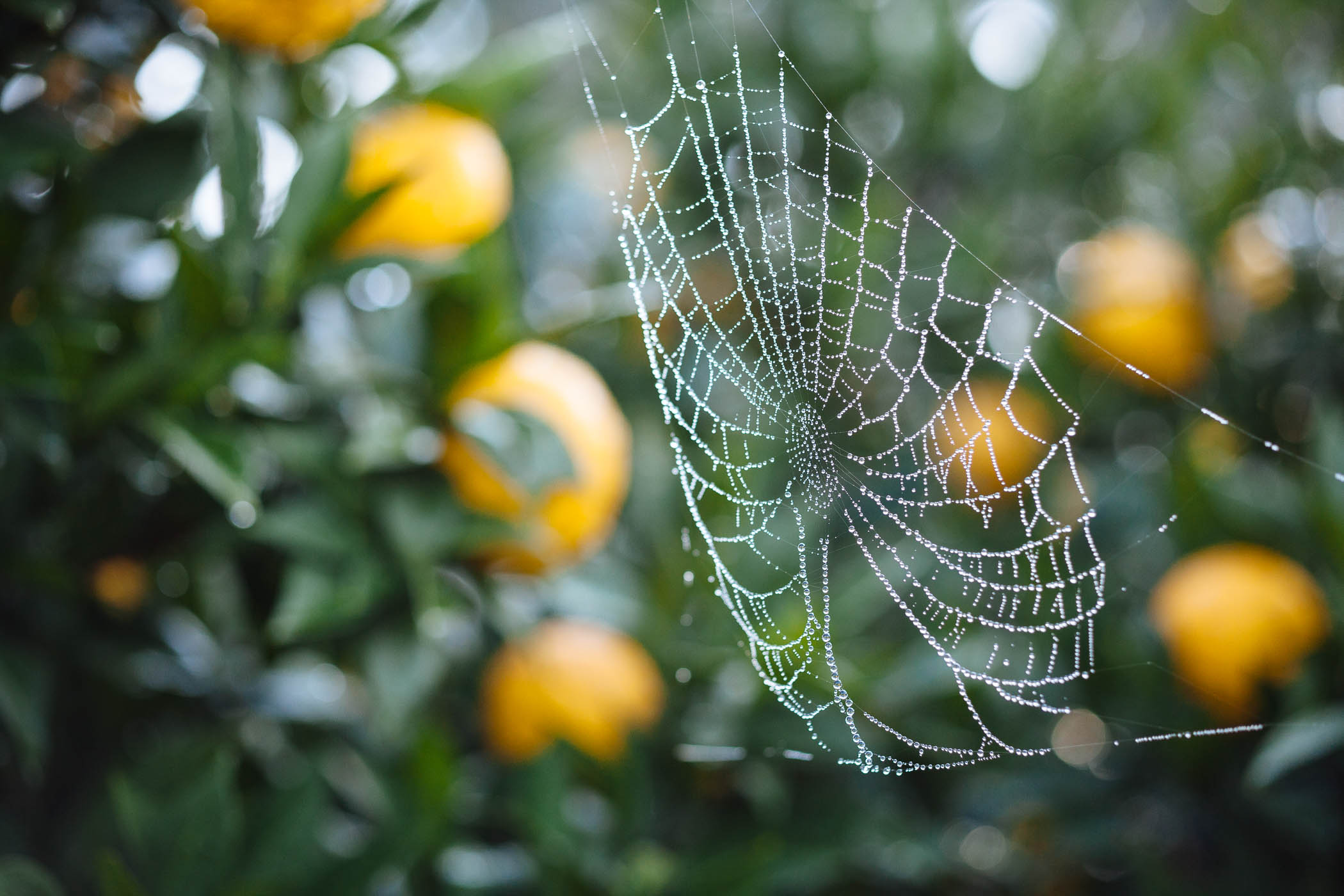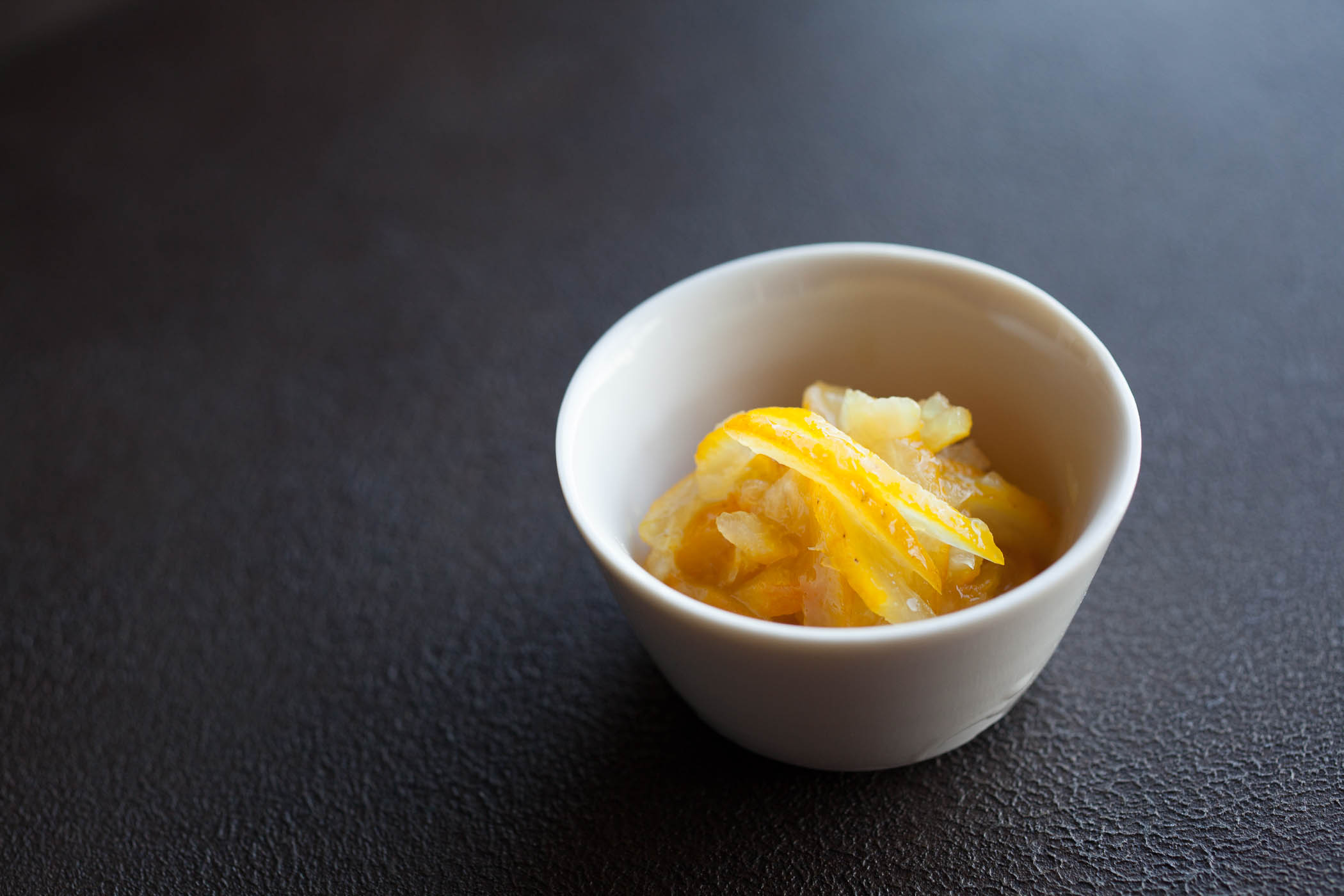Yuzu brings the First Citrus Scent of Winter

The almanac tells us that it is the season of first winter. Far north in Hokkaido where the seasonal divisions are more pronounced like in New England, first flurries must be falling fast. But here the songbirds still chirp on days warm enough to dry our laundry outside. But signs of winter are creeping in. Beside the stone pillar at the entrance to our road, the camellia tree is dotted with many crimson blossoms signaling the arrival of the cold season. Camellia are a strange and cheerful companion at this time of year, opening their blossoms to us at just the time that all other plants call it quits and go dormant until spring. With their reds and pinks and whites, they keep us company throughout winter.
In the orchard the daidai are tinged with orange and the yuzu are nearing ripeness. Our yuzu tree is scraggy and matted, quite different from the beautiful, thick trunked, shapely trees of the yuzu orchards I’ve visited in Kagoshima prefecture at the southern tip of Kyushu. I remember so clearly, on an early morning in an orchard there, how dew droplets outlined each strand of a spider’s web strung between the branches. It glistened in the slanting rays of the rising sun as though strung with tiny diamonds. That trip left a lasting impression, particularly my time spent with an eighty year old yuzu farmer. He wore caramel colored suede gloves, thick like a falconer’s, to protect his hands against the yuzu tree’s talon-like thorns. He carried a pack of cigarettes in his breast pocket and wore a lighter strung around his neck. As I trained my camera on him atop his ladder, his eyes twinkled back at me, set in a face as leathery as his gloves. He held the bright yellow orb out to me, with leaves still attached. Those leaves were beautiful, two oblong segments attached by a slender petiole like the thorax and abdomen of a wasp.
A yuzu fruit contains many large seeds and only a little juice, mellow and citrusy like a cross between mandarin orange and meyer lemon. I’ve heard others liken it to a blend of grapefruit and lime. While in season, we use the juice to dress vegetables and salads. But the fragrant peel deserves most of the attention. We grate the it over almost anything, noodle dishes and even tofu shiraae, and of course slip slivers of it into soups. But there are far too many on our tree and we cannot use them all. So I peel wedges of them and layer fragrant skins in plastic wrap in the freezer where they will last a good long while. Kuniko clipped the remaining fruits one day and spent a long day squeezing, blanching, and chopping to make candied yuzu rinds. The fragrance perfumed the whole house and wafted outside through the vent leading me inside to see what she was doing. “The book says rock sugar is best,” she told me. I contained my surprised. She was referring to a book, something I hadn’t seen her do since the stroke that took written language from her. And if I ever questioned all those sunny, beautiful days she spent bent over kanji workbooks at her desk when I thought her time might be more fruitfully spent arranging flowers or taking walks, I was wrong. With each passing year she is becoming more and more herself again, gaining bits of her old life back, like not letting a single fruit fall from the tree and go to waste.
Yuzu satozuke, rinds preserved in sugar, is a poor man’s marmalade. The citrus is juiced, the inner pulp removed, and the peels roughly sliced. A quick blanching fortifies the color and aroma. Once drained, they are mixed with rock sugar and left to sit in a cool dark place for a few weeks. By the time they are ready, it will be true winter here. With the holidays coming we’ll be in the mood for something festive and pull out the jar of sweet yuzu rinds, the color of summer. We’ll relish the bitter sweet flavor, like a fine chocolate, with a lick of smoky whisky by a twinkling tree.
